Abstract
A polysaccharide possessing a capacity to wilt plant cuttings has been isolated and purified from cultures of Corynebacterium sepedonicum. The molecular weight, based on the average of molecular weights determined by 3 physical methods, is 21,450. The empirical formula of the polysaccharide is C48H96O48N. It is antigenic and the borate complex migrates in an electric field. It has an intrinsic viscosity of 0.125 and an S20w of 0.76. A hydrolysate of the compound yields glucose, mannose, 2 unidentified reducing compounds and 1 unidentified non-reducing compound. The nitrogen in the toxin can be accounted for in 6 amino acids. Although the toxin is primarily polysaccharide it might more aptly be termed a glycopeptide.
Some information regarding the physiological activity of this compound as well as a discussion of how it acts to bring about wilting is included.
Full text
PDF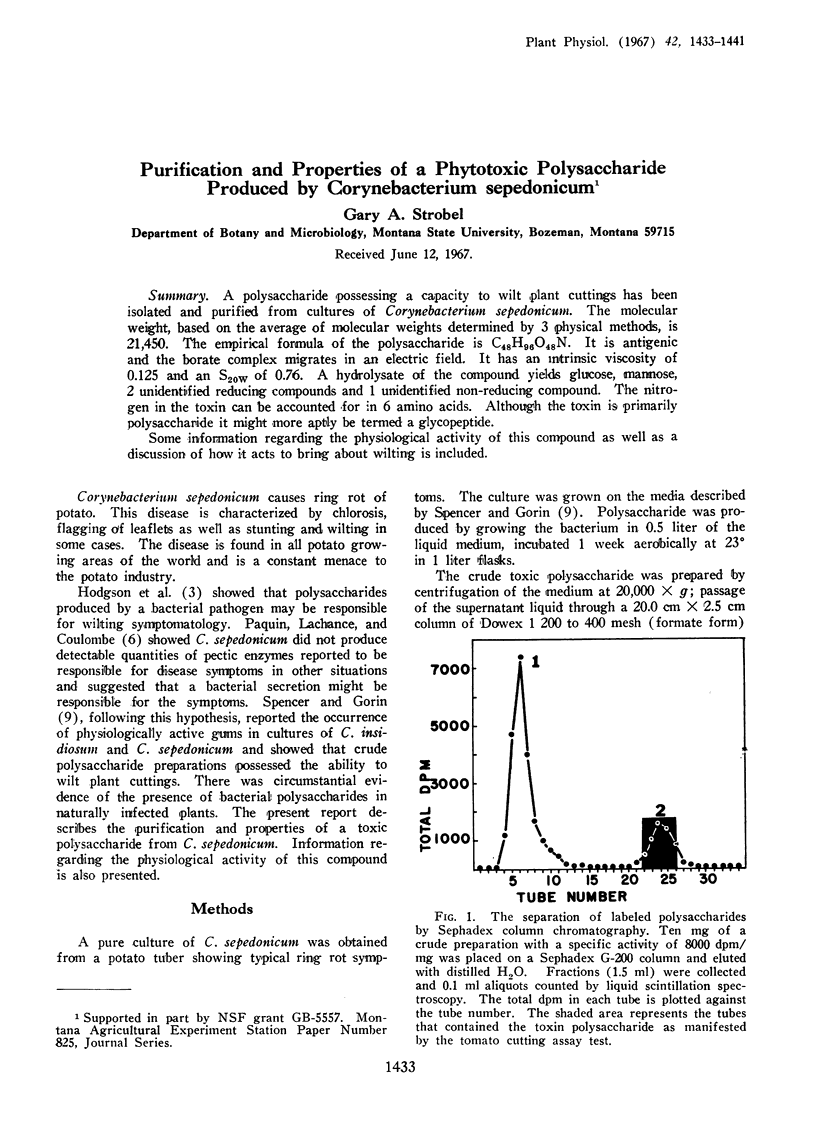

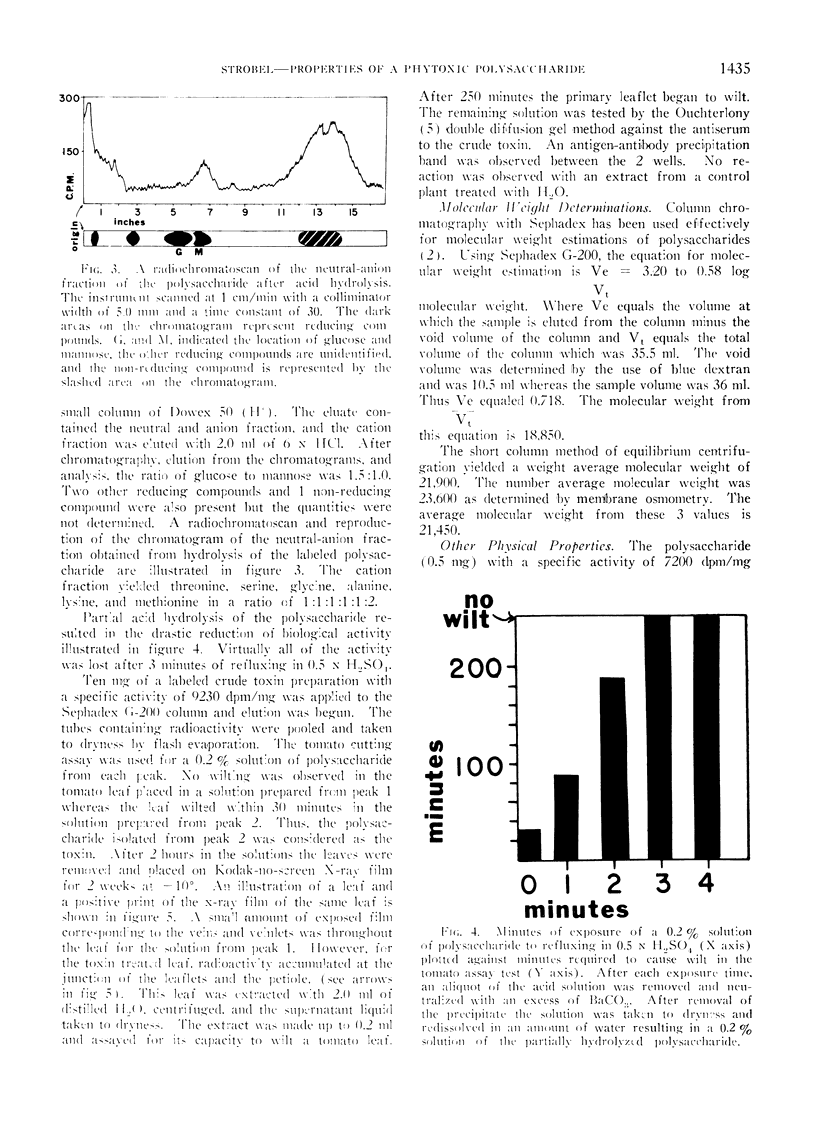
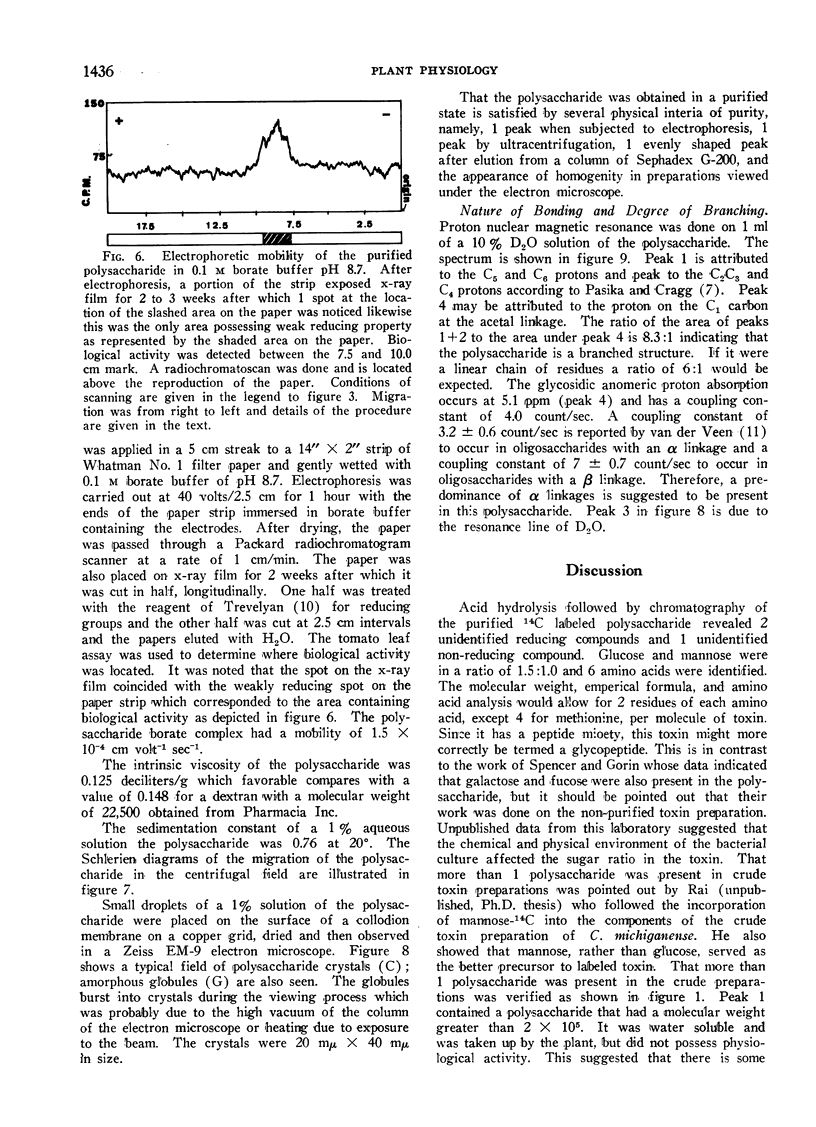

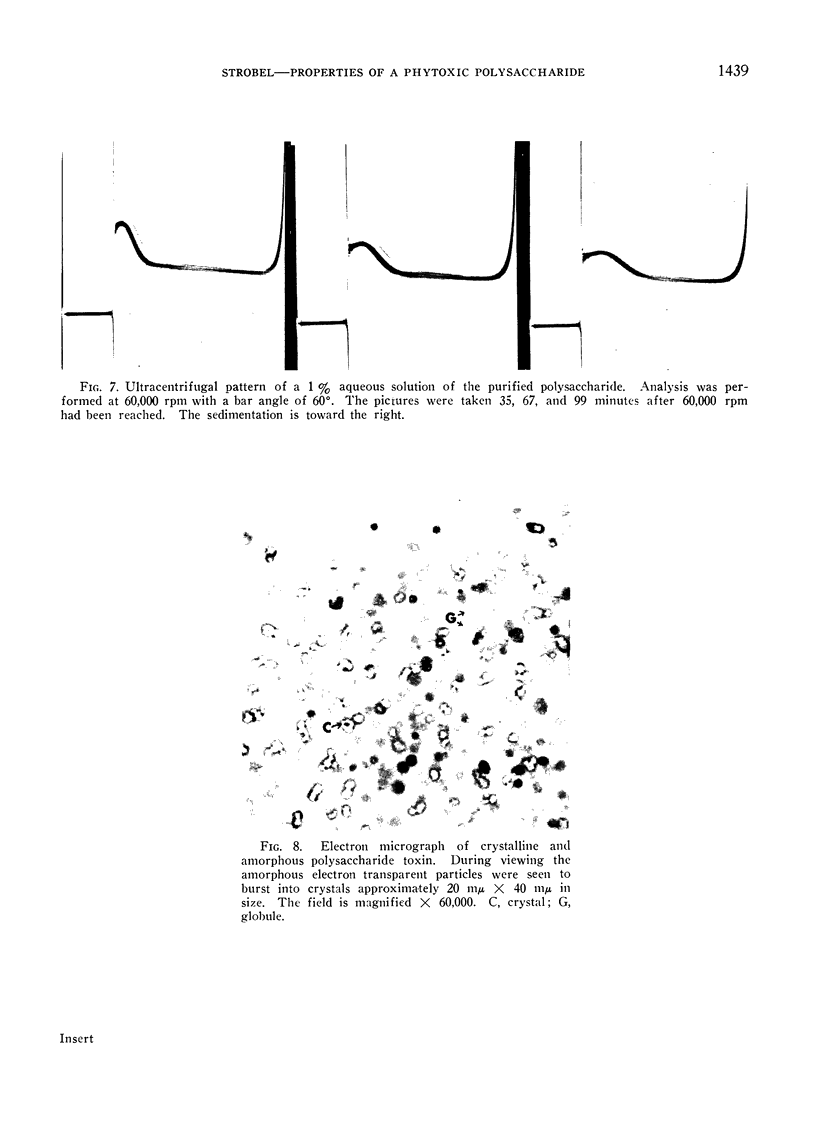
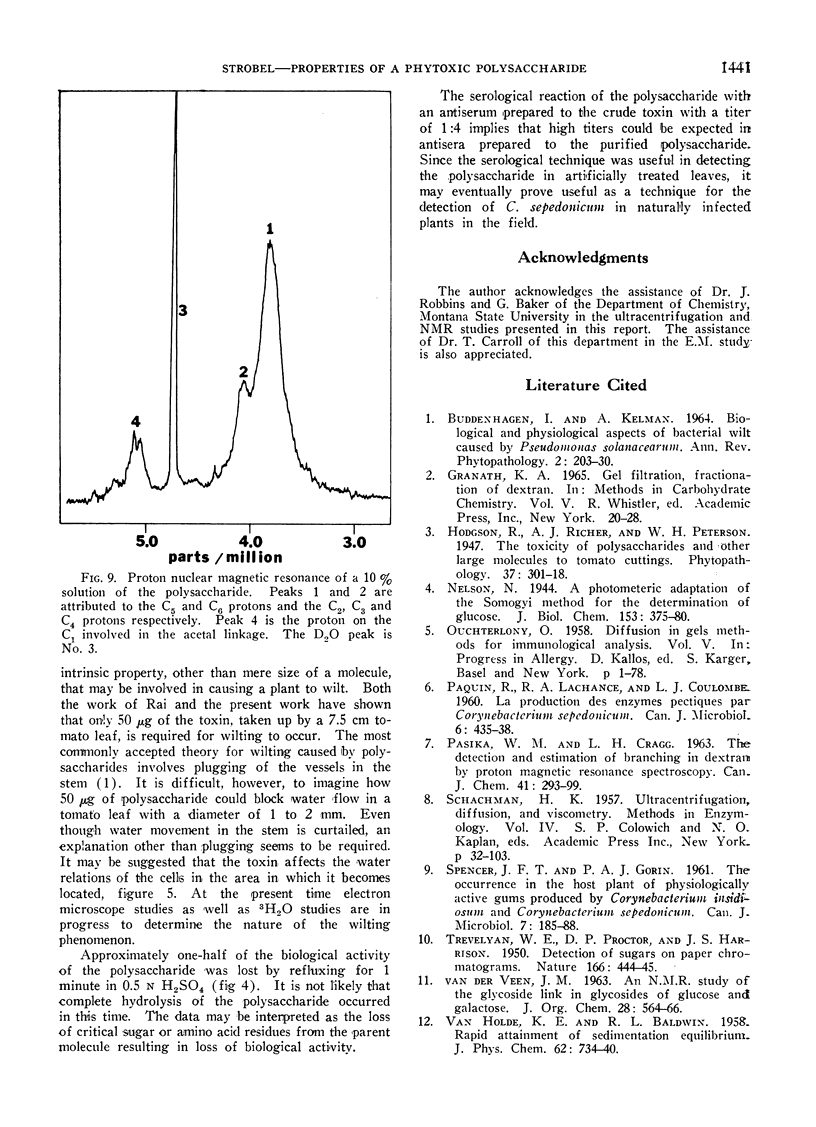
Images in this article
Selected References
These references are in PubMed. This may not be the complete list of references from this article.
- OUCHTERLONY O. Diffusion-in-gel methods for immunological analysis. Prog Allergy. 1958;5:1–78. [PubMed] [Google Scholar]
- PAQUIN R., LACHANCE R. A., COULOMBE L. J. [The production of pectic enzymes by Corynebacterium sepedonicum]. Can J Microbiol. 1960 Aug;6:435–438. doi: 10.1139/m60-049. [DOI] [PubMed] [Google Scholar]





